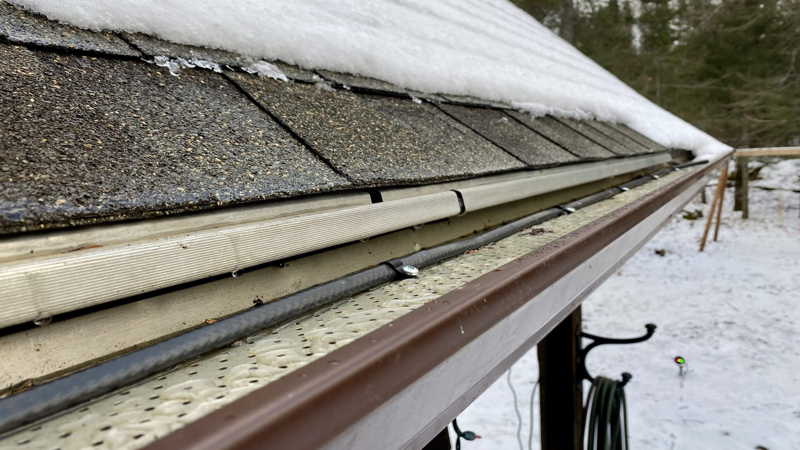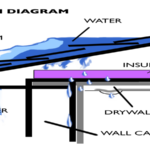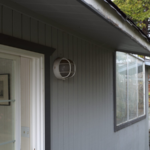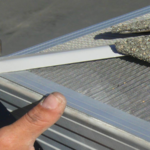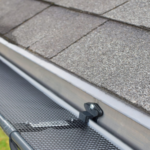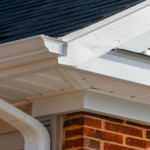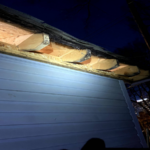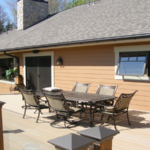If you’re someone who takes pride in their home, you know that gutters are an important part of keeping your property in top condition. Not only do they protect your home from water damage, but they also help to keep your landscaping looking its best. However, if your gutters are installed improperly, they can actually do more harm than good. Here’s what you need to know about proper gutter installation, and why it’s so important to make sure it’s done right.
Gutters are designed to channel water away from your home, but if they’re not installed properly, they can actually do the opposite. If your gutters are too low, water can overflow and cause damage to your foundation or your landscaping. If they’re installed too high, they won’t be able to do their job properly and water will pool around your home, which can lead to foundation problems or water damage to your siding or trim. Either way, improper gutter installation can lead to big problems down the road, so it’s important to make sure they’re installed correctly from the start.
There are a few things you can do to make sure your gutters are installed properly. First, make sure they’re the right size for your home. Gutters come in different sizes, and if they’re too small for your home, they won’t be able to handle the volume of water they need to. Second, make sure they’re installed at the correct slope.
What is improper gutter placement?
If your gutters are placed too close to your home, they can cause water to seep into your foundation, which can lead to cracking and other damage. If they’re placed too far away, they won’t be able to effectively funnel water away from your home, which can lead to flooding and other water damage. Improper gutter placement is a common problem, and one that can be easily avoided by working with a professional who can help you determine the best placement for your gutters.
What are some common mistakes that people make when installing gutters?
- Not making sure the gutters are properly pitched. This is probably the most common mistake people make when installing gutters. If the gutters are not pitched properly, they will not drain properly and will eventually start to leak.
- Not using the proper size of gutters. Another common mistake is using gutters that are too small for the size of the roof. This can cause the gutters to overflow during a heavy rain and can also cause damage to the fascia board.
- Not installing gutter guards. Gutter guards are a great way to keep leaves and debris out of the gutters. Without them, the gutters can quickly become clogged, which can lead to leaks and other problems.
- Not properly securing the gutters. If the gutters are not properly secured to the house, they can come loose during a storm and cause damage to the house or even come crashing down.
How do you fix improperly sloped gutters?
One way to fix improperly sloped gutters is to add or adjust the hangers that are holding the gutters in place. This will ensure that the gutters are sloped correctly and draining properly. Another way to fix this issue is to add more downspouts to the gutters. This will help to move the water more quickly and efficiently away from the home.
What is the most common problem with gutters?
The most common problem that people have with their gutters is that they become clogged with leaves and other debris. If the gutters are not cleaned on a regular basis, they can become overloaded and start to sag or even collapse. Another problem that can occur is that the gutters can start to rust and deteriorate.
What is the rule of thumb for gutter installation?
- Make sure to clean the gutters and downspouts before installation. This will help to remove any debris that could clog the system.
- Be sure to install the gutters at the correct pitch. This will ensure that water flows properly and does not pool in the gutters.
- Use a level when installing the gutters to ensure that they are installed evenly.
- Make sure to seal the joints between the gutters and downspouts to prevent leaks.
- Regularly inspect and clean the gutters to ensure that they are functioning properly.
What is a false gutter?
A false gutter is a type of gutter system that is installed on the outside of a building, typically beneath the eaves. False gutters are used to collect and redirect rainwater away from the building envelope, preventing water damage. False gutters are also known as exterior gutters or eaves gutters.
What issues can not having gutters cause?
- Water damage to your home: Water that pools around your foundation can seep into your basement or crawlspace, leading to mold, mildew, and structural damage.
- Pest problems: Mosquitoes and other pests love standing water. If you don’t have gutters, your yard is likely to become a breeding ground for them.
- Landscaping problems: Water that flows off your roof and onto your landscaping can kill plants and erosion.
- A messy yard: Leaves, twigs, and other debris can accumulate on your roof and in your yard if you don’t have gutters. This can make your yard look messy and can be difficult to clean up.
Can bad gutters cause foundation problems?
While faulty gutters won’t directly cause foundation problems, they can exacerbate issues that are already present. Water that pools around the foundation can seep into cracks and cause further damage. In extreme cases, this can lead to the destabilization of the foundation, which can cause the home to sink or collapse.
Bottom Line
If you’re thinking about getting new gutters installed, make sure you find a reputable company to do the job. Improper gutter installation can lead to a whole host of problems, from water damage to your home’s foundation to insect infestations. Don’t let your house take the brunt of these problems – take the time to find a qualified contractor to do the job right.
